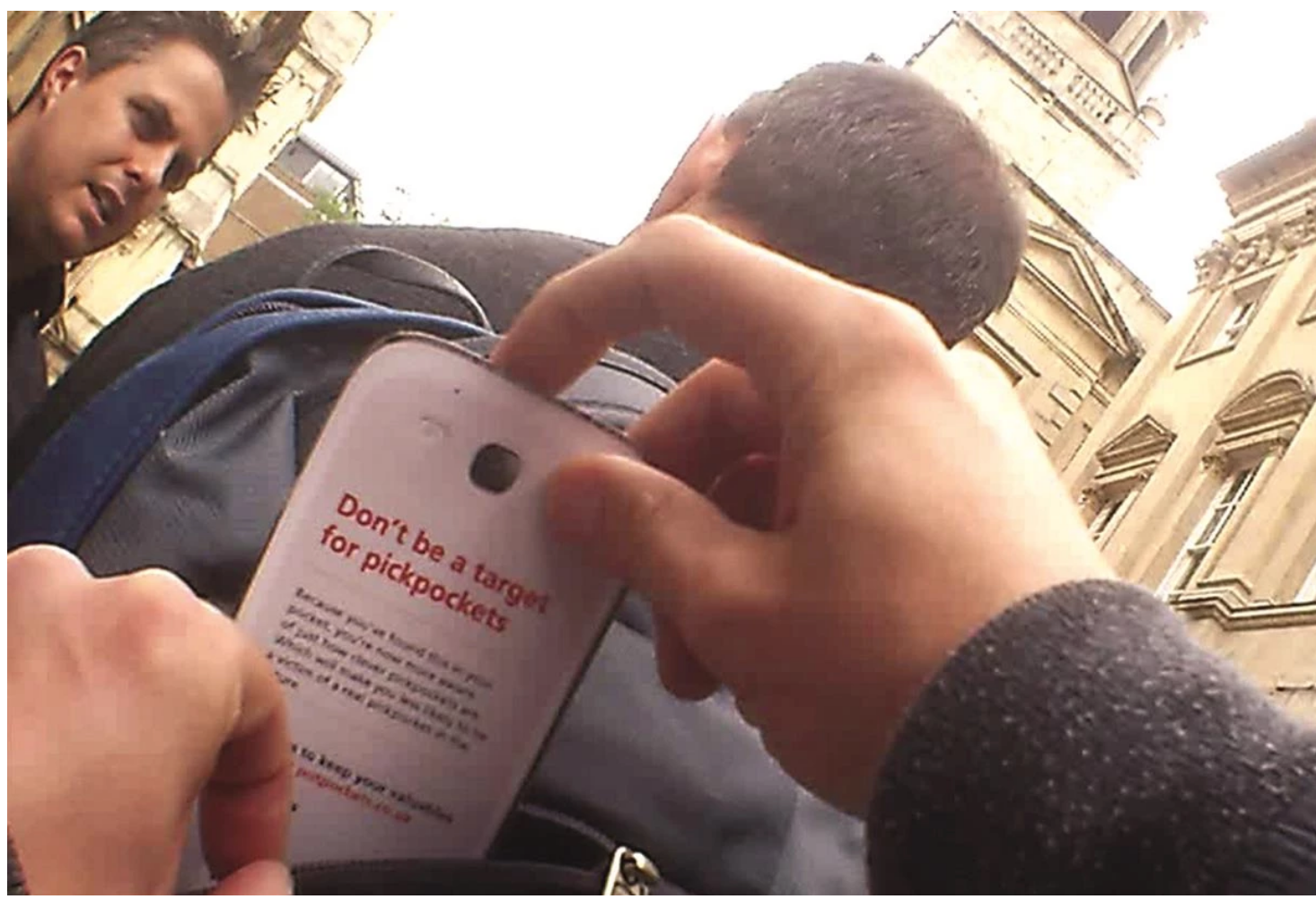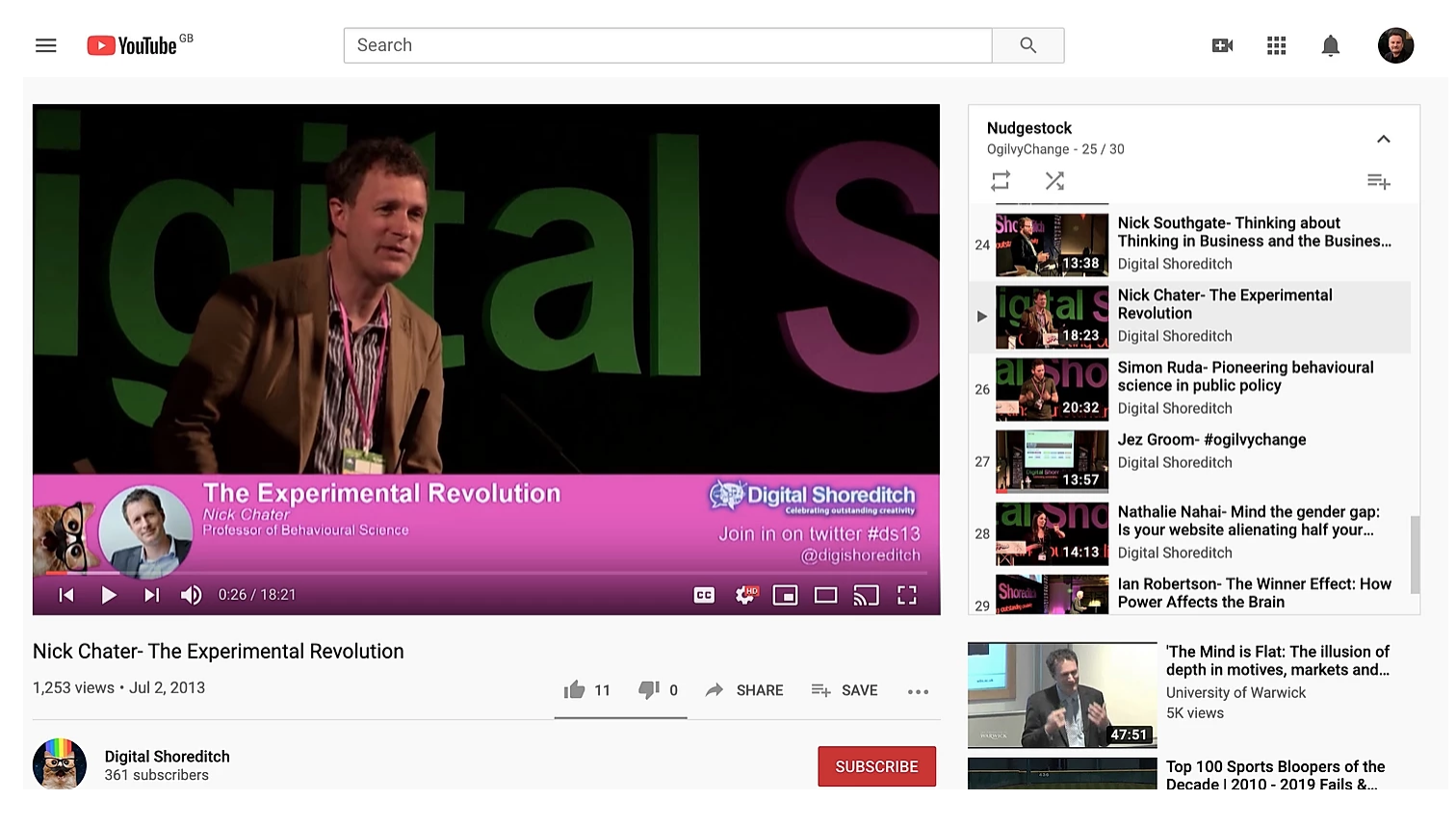Reducing Pickpocketing by Put Pocketing, England
This chapter stresses the importance of ‘Do to Think’ – try out an idea and discover the problems as you go.
By acting first and thinking later, businesses can innovate and progress more quickly.
We saw how Jez’s team implemented the idea for PutPockets long before they had devised a behavioural science rationale for it, which then helped to convince Crimestoppers to take a punt on it.
https://www.youtube.com/watch?v=dA5do67Q_BM
This was also picked up by other organisations such as the Showcase of Fundraising Innovation and Inspiration.
http://sofii.org/case-study/crimestoppers-reverse-pickpocketing-is-putpocketing
Here, Emma de la Fosse explains the behavioural science behind the PutPockets idea.
"By using old techniques in new ways, we actively created what scientists call a ‘hot state’, which is conducive to lasting behavioural change. Exposing people to the possibility of something, but without them being directly affected, is proven to create greater resonance and impact. We want to make Crimestoppers central to a real shift in the nation’s attitude towards this crime."
Before bringing the idea for PutPockets to a client, it was first trialled at the very first Nudgestock. Before Nudgestock went to Deal or even Folkestone, we started with far more humble beginnings and hosted a day as part of Digital Shoreditch. The speakers were amazing, and included Paul Ormerod, Nassim Taleb, Dr Laurie Santos and many more. If you'd like to get a flavour of the event, watch this film of Professor Nick Chater at Warwick Business School talking about The Experimental Revolution.
Do to Think
We were also introduced to the idea of 'Do to Think' from Jules Goddard, a Fellow of London Business School who has written a number of books on these themes and others, and who also presented at the second Nudgestock in Deal, Kent.
Want to read more of Jules' work? Here's where to start.
https://www.amazon.co.uk/Uncommon-Sense-Common-Nonsense-Organisations/dp/1846686024
It is important to bring behavioural science to life to demonstrate its efficacy with stakeholders. And creating a prototype will teach you how to operationalise the idea in real life. To learn more about testing out your ideas in the real world using design thinking, read this.
https://www.interaction-design.org/literature/article/design-thinking-get-started-with-prototyping
The Bottom Drawer

Photo by Ksenia Makagonova on Unsplash
Store ideas and inspiration in your bottom drawer.
But don’t lock them away – they need to be at the front of your consciousness to bring these ideas to life.
Here are some creative directors using digital to share the ideas which never left their 'bottom drawer.'
https://www.straatts.com/bottom-drawer
http://borjaiciz.com/project/bottom-drawer
Models for Behaviour
Use a simple behavioural models to identify the behavioural mechanisms to substantiate your idea.

We talk about using a simple behavioural model in this chapter, and this report from the COI in the UK Government is a great introduction to thinking about models.
https://www.thensmc.com/sites/default/files/433_1261695485COICOMMUNICATIONSANDBEHAVIOURCHANGE.pdf

We will share more about behavioural models in greater depth in later chapters.


